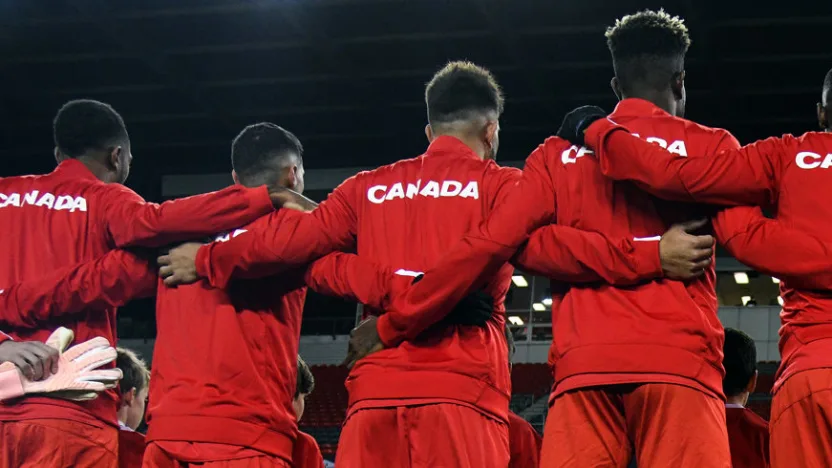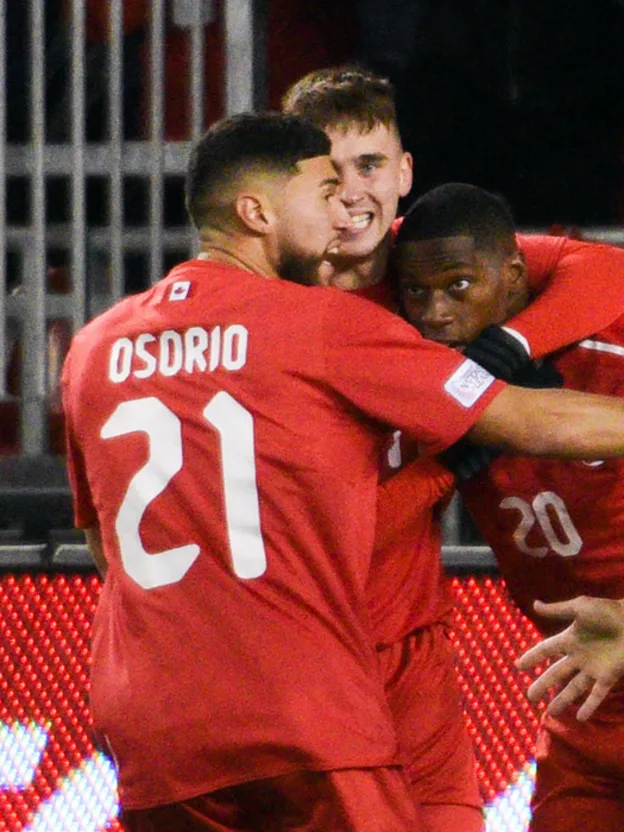TORONTO – Some 800 kilometres southeast of BMO Field in East Hartford, Connecticut, the U.S. men’s national team pitted a new-look squad against South American challengers Peru, with one eye on an upcoming friendly against England.
But in Toronto, Canada’s equally-renewed national team brushed aside lowly Dominica, a 5-0 win building on an opening 8-0 victory over the U.S. Virgin Islands to give John Herdman’s men another three points in CONCACAF Nations League Qualifying. Canada’s next test? An away trip to St. Kitts and Nevis. Despite some recent failings, the U.S. aren’t involved with this precursor to the 2019 Gold Cup – they, along with Mexico, Costa Rica, Panama, Honduras and Trinidad and Tobago, have automatically earned qualification to the regional competition. The rest of CONCACAF’s 34 nations have not. And so, Canada squares off against four of the region’s minnows, laying down thorough beatings in the hopes of finishing as one of the top six teams in the table and earning their own automatic berth for the upcoming Gold Cup and a subsequent spot in League Group A of the CONCACAF Nations League, a new tournament which replaces international friendlies in the region. It would be easy to point to the U.S.’s friendlies against formidable outfits like Peru and England and conclude that the heightened level of competition is a net benefit for their team. Conversely, the case could be made that Canada’s own one-sided matchups might not be doing them any immediate favours. But midfielder Jonathan Osorio points out that those comparisons aren’t quite so black-and-white. “It’s an official game. If you think about it, this game actually means more than the game the U.S. is playing,” Osorio told CanPL.ca, in response to the U.S.’s fixture list. “It’s better to see teams in our region more often because, when it comes down to it, the important games that we need to play to qualify for the World Cup are against CONCACAF teams. It’s better for us to get accustomed to playing these kinds of teams – and playing in the conditions that we play in.” He added: “It’s actually good that we’re playing in these kinds of games. As you can see, we go to the end. It’s not like we’re winning 5-0 and then we stop; we’re going to the end to score as many goals as we can. It doesn’t matter the opponent, as long as we’re perfecting our structure and our identity. That’s what these games are for.”

For Canada, this match also proved valuable because it offered debuts to – and, subsequently, cap-tied – young players like Zachary Brault-Guillard, Ballou Tabla, and Alessandro Busti. Matches of this sort also give Canada’s young crop of attackers meaningful minutes on the field to learn about one another, while scoring in bunches. But they’re also lopsided affairs, with Canada dominating across multiple metrics: 20 shots to Dominica’s four, 73% possession, 11 corner kicks to just the one, and 480 passes to Dominica’s 126. And, of course, five goals to zero. “Maybe they’re easy (games), but they’re important,” Osorio offered. “For us, we set goals for ourselves that are not easy,” he added. “We know that these are the steps towards the Gold Cup and the World Cup and we know that we have to perform well in order to make that step forward. It’s not hard, at least on this team, to motivate ourselves for these kinds of games.” Herdman echoed a similar sentiment after the match, stating: “All I care about is seeing this team move forward.” Those individual steps forward, Osorio went on to explain, have Canada moving toward the ultimate focus: Qualifying for the 2022 FIFA World Cup. With Canada joint-hosting the 2026 version, an automatic berth would have Canada qualify for the world’s biggest tournament some 40 years after its last entry in 1986. But that’s four years too late for Osorio. “Some people mention the 2026 World Cup, but any time they mention it to me, I totally ignore that, because there’s one World Cup before that, and that’s our focus,” Osorio said. “Our focus is to qualify for this tournament, and we think and we know we can.”
